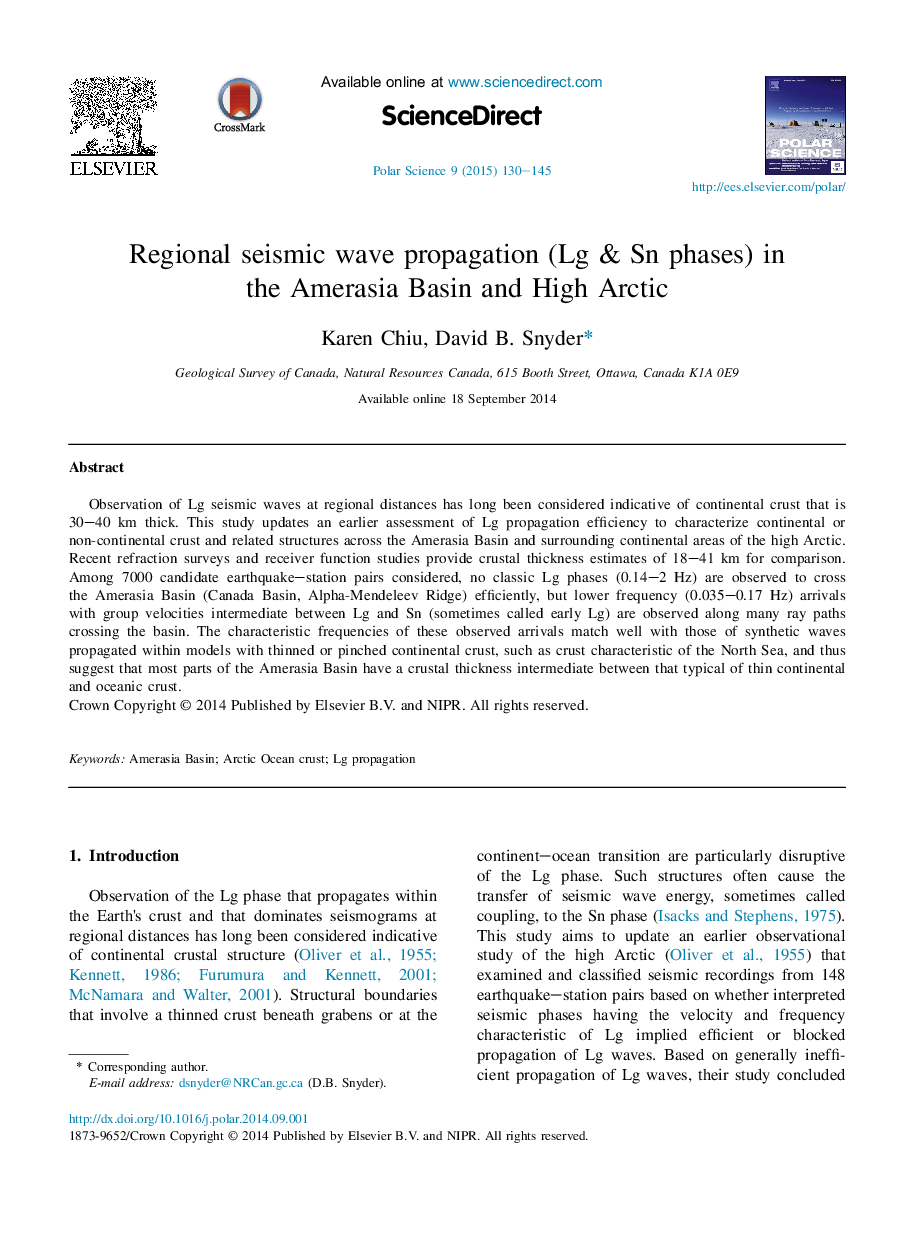| Article ID | Journal | Published Year | Pages | File Type |
|---|---|---|---|---|
| 4683285 | Polar Science | 2015 | 16 Pages |
Observation of Lg seismic waves at regional distances has long been considered indicative of continental crust that is 30–40 km thick. This study updates an earlier assessment of Lg propagation efficiency to characterize continental or non-continental crust and related structures across the Amerasia Basin and surrounding continental areas of the high Arctic. Recent refraction surveys and receiver function studies provide crustal thickness estimates of 18–41 km for comparison. Among 7000 candidate earthquake–station pairs considered, no classic Lg phases (0.14–2 Hz) are observed to cross the Amerasia Basin (Canada Basin, Alpha-Mendeleev Ridge) efficiently, but lower frequency (0.035–0.17 Hz) arrivals with group velocities intermediate between Lg and Sn (sometimes called early Lg) are observed along many ray paths crossing the basin. The characteristic frequencies of these observed arrivals match well with those of synthetic waves propagated within models with thinned or pinched continental crust, such as crust characteristic of the North Sea, and thus suggest that most parts of the Amerasia Basin have a crustal thickness intermediate between that typical of thin continental and oceanic crust.
